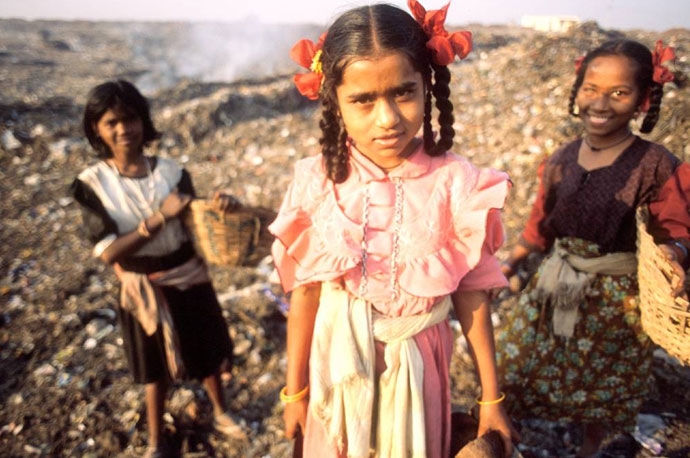 Think you know pollution?
Think you know pollution?
Here are some facts about toxic pollution that might surprise you.
- Pollution is one of the biggest global threats. Toxic pollution from contaminated sites affects over 200 million people worldwide, with tens of thousands poisoned each year.
- One in seven deaths. WHO statistics show that 56 million people died in 2012 worldwide. Of those, nine million died because of pollution. In other words, pollution killed one in seven people.
- Pollution is the leading cause of death in low- and middle-income countries. Of the 9 million people killed by pollution worldwide in 2012, 8.7 million deaths occurred in low- and middle-income countries. They are the poisoned poor. Pollution is the silent killer of millions in poor countries.
- Pollution exacts a greater toll than even some of the most dangerous diseases. Figures from 2012 show that pollution killed two-thirds more people than malaria (625,000 deaths), HIV/AIDS (1.5 million deaths), and tuberculosis (930,000 deaths) combined.
- Toxic pollution is one of the most underfunded global problems despite the huge number of people affected. This is partly due to a lack of data. However, recent research has offered a clearer understanding of the true toll of pollution and added to the growing body of information about the problem. (Read more about the Poisoned Poor)
- Children are particularly vulnerable. While children under six make up only 20% of the world’s population, over 40% of the global burden of disease falls on them. Toxic pollution has a bigger impact on their smaller bodies, interfering with their development, inflicting damage that can last a lifetime. Children can be poisoned just by running around barefoot in their homes or villages.
- Pollution is one global problem that can be managed in our lifetime. Life-threatening pollution has already been eliminated in much of the developed world through initiatives like the Superfund in the U.S. and similar efforts in other countries. The technology and know-how to clean up toxic pollution already exists. All that is needed are resources and commitment.
- There are a finite number of worst polluted sites in the world. Pure Earth’s Toxic Sites Identification Program has assessed more than 3,000 polluted hotspots in 47 countries, growing Pure Earth’s global database of polluted places. The one-of-a-kind database provides vital information about the magnitude of the problem and serves as a valuable roadmap for prioritizing these sites for global cleanup.
- Pollution solutions are relatively low-cost. A life can be saved with as little as $42 through the removal of hazardous pollution on Blacksmith projects. $20,000 is enough to start a project that saves lives.
- The majority of pollution is caused by small-scale informal operations rather than large multinational companies. However, demand for consumer goods from high-income countries still drive pollution activities in low-income countries.
- Solving pollution problems usually promotes, rather than inhibits, economic growth. Solutions can increase access to valuable resources, such as more efficient recovery of lead from battery recycling, or reclamation of land in urban areas.
- Pollution does not stop even when the source of the pollution is removed. This is called legacy pollution. The Cold War, for example, has left a toxic legacy in the form of derelict and abandoned old weapons and chemical factories. The affected population will continue to suffer unless cleanup is conducted.
- Pollution can vastly lower life expectancy. In some of the world’s worst polluted places life expectancy can be as low as 45 years because of lung, throat and thyroid cancers.
- Death is not the only end result. Pollution causes chronic illness, neurological damage and a range of diseases that might not kill but might incapacitate a person or result in irreversible damage. For instance, the presence of lead in children lowers I.Q. by an estimated 4-7 points for each increase of 10 μg/dL. In some of the world’s worst polluted places, babies are born with birth defects, children have lost 30 to 40 IQ points.
- Pollution affects everyone. While pollution affects the immediate population the most, its effects are felt far and wide because of the globalized economy. In addition, some pollutants, like mercury, travel into rivers and seas worldwide, poisoning the seafood supply.
- The Global Alliance on Health and Pollution (GAHP) is the first international coalition of its kind dedicated to addressing the threat of toxic pollution on a global scale. The GAHP has created one of the world’s largest platforms for coordinating resources and launching efforts to fight toxic pollution. Any low- or medium-income country can approach the GAHP for help with pollution issues.
- Most current international programs regulate the production and use of select toxins and the trans-boundary movement of waste rather than the mitigation or remediation of existing pollution. It is a global problem that is just emerging on the international radar screen. Pure Earth is the leading organization active in toxics cleanup on a global scale.
Related:
The leading cause of death in developing countries might surprise you — It’s time to pay attention to a startling stealth killer, Ensia, Jan. 13, 2015



